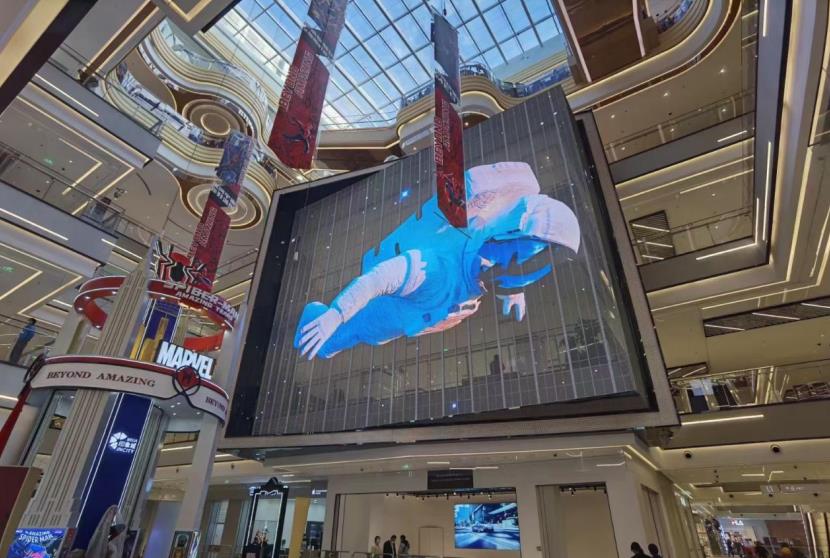In the ongoing wave of innovation in digital display technology, transparent LED screens have achieved milestone advancements. The latest micro-lattice optical architecture has elevated screen light transmittance to unprecedented levels. This breakthrough not only redefines human-machine interface standards but also provides new technological support for smart city development.

Huzhou Zhili Cultural & Sports Center Transparent Screen
Sansi's transparent screens feature transparent material design with thin, highly transparent, and bright panels. The independent light bar structure allows flexible size adjustments to meet diverse needs, offering strong adaptability and easy maintenance. The transparent screen design delivers clear, realistic image quality with visually impactful effects. Applications include stage backdrops, broadcasting halls, retail counters, exhibition centers, and shopping mall facades.
Core Dimensions of Technological Innovation
Optical Structure Redesign
By reconstructing the arrangement of light-emitting units, the R&D team created a unique honeycomb microstructure. This design significantly reduces light-blocking areas while maintaining pixel density, enabling near-unimpeded light penetration. Special light-guiding materials further eliminate the haze effect common in traditional transparent screens, achieving near-invisible display performance.
Circuit Design Breakthrough
Ultra-fine embedded circuit technology compresses conductive components to microscopic levels. Combined with self-developed transparent conductive films, it achieves perfect integration of circuitry and display units. This breakthrough makes screens virtually invisible when powered off while delivering vibrant, realistic dynamic visuals when activated.
Environment-Adaptive System
Intelligent light sensors detect ambient lighting changes in real-time, dynamically adjusting screen brightness and color temperature. Whether under direct outdoor sunlight or complex indoor lighting, the system maintains optimal visual transparency and display clarity.
Expanded Application Scenarios
Architectural Facade Revolution
As building envelope displays, the ultra-high transparency preserves natural indoor lighting while enabling dynamic surface messaging. This "invisible display" technology creates new possibilities for architectural aesthetics.
Retail Display Upgrade
Window applications break physical limitations of traditional displays, allowing simultaneous viewing of physical products and digital content. The blended reality model is reshaping retail experience standards.
Transportation Window Innovation
In public transit, this technology provides reliable solutions for window displays. Passengers can enjoy outside views while accessing real-time travel information, redefining in-motion space interactions.
The display industry ecosystem is being restructured by this technology. Upstream material suppliers are accelerating new optical substrate development, midstream panel manufacturers are adjusting production lines, while downstream application providers explore innovative business models. Sectors like education, healthcare, and cultural tourism are adopting related applications.
The R&D team indicates next-gen products will focus on color accuracy and environmental adaptability, with explorations in flexible substrates. As industrialization accelerates, this technology may become a key display solution for future smart devices, offering more natural human-machine interfaces for the IoT era.